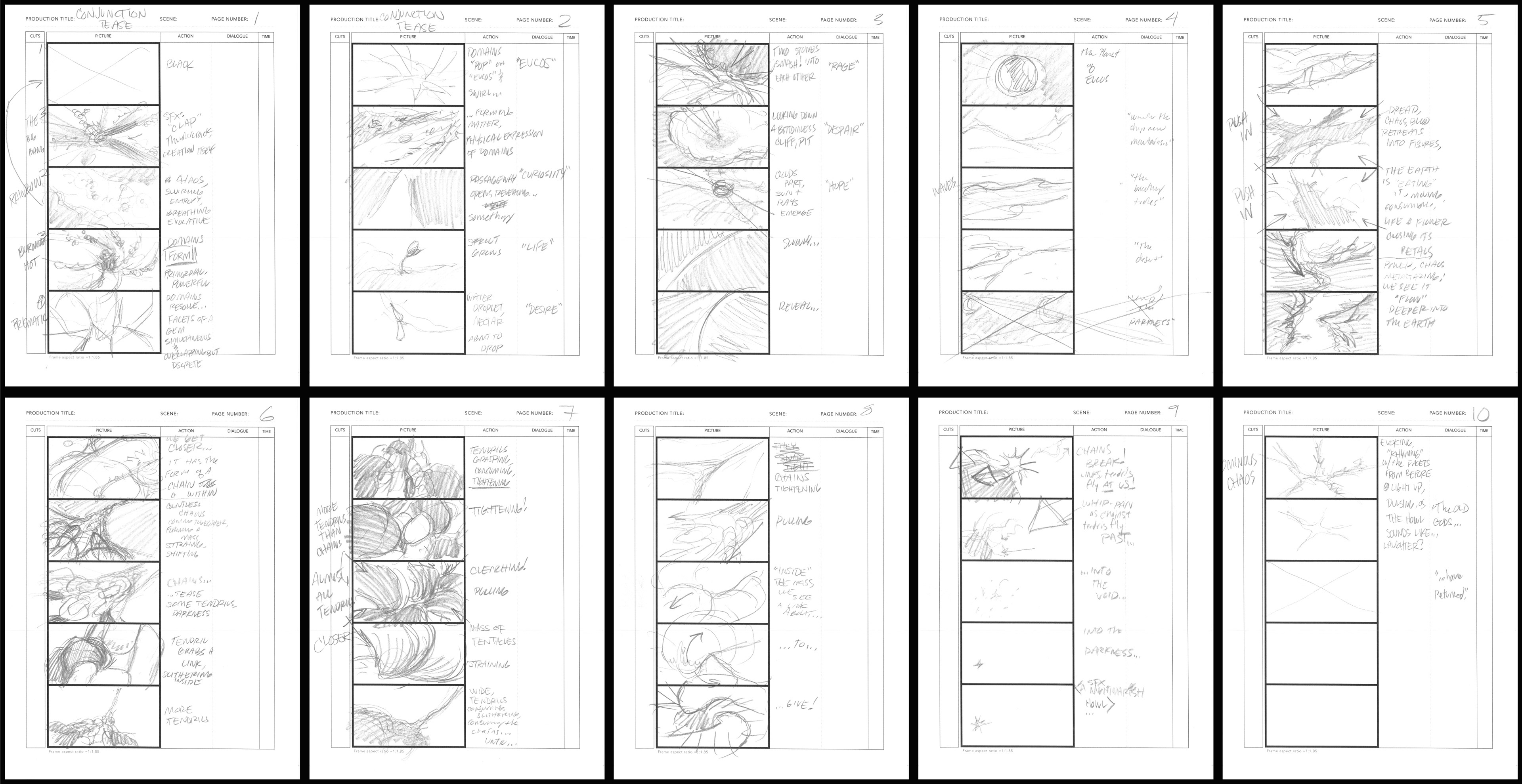I’ve tried to put together an overview of how I work. This is the shambling, clunky result.
Many things fail to come together as elegantly as we’d like. This is one of them.
1. HIGH LEVEL FLOW + BEATS
The first step is to break down the flow of the experience—sometimes this is linear, sometimes it’s dynamic and all over the place, but the idea is that I want to understand what’s happening at a high level.
Often (usually) we’re working within tight constraints regarding timing and functionality, so it’s critical that we understand those up front and design the narrative to support and exist cohesively with the experience as a whole.
The idea is to build something that’s consistent throughout, a truly holistic experience where every part supports and enhances the others.
At least…that’s the goal.
2. SCRIPT DEVELOPMENT
Here we move into fleshing out the dialogue in a non-destructive and iterative way—which, for the record, I’m obsessed with, feeling out which lines need to link up with which action beats. Sometimes I’ll drop thumbnails / storyboards (see below) right into the spreadsheet.
Alternate lines and variants are much simpler to manage and track in this format as well.
My preferred way is to do this in a spreadsheet that links back—when neccessary—to the flow + beats document from above.
On a larger / longer project I would break this up even more granularly—likely at the scene or sequence level—but for this project, doing it by Act worked well.
3. SCREENPLAY
At some point we need to generate the script in screenplay format, so it’s critical that we can do so quickly and non-destructively, be it to hand off for VO talent, approvals, or whatever else.
I find that printing out and sitting down with a cup of coffee to read through, edit, and proofread can make a big difference. I do it as often as possible.
Also: it’s always satisfying to have an actual, physical screenplay that you can hold in your hands.
Click to open files in new window
4. STORYBOARDS
An unpolished, raw, and…greasy? look at how the sausage gets made.
They’re not much to look at, but I think its important to show the process. Most of the time we see beautiful, polished storyboards…that’s not what these are.
These are a fundamental part of my writing process; there’s no distinction between ‘writing’ and ‘boarding’—they’re inseparable.

Guild of Guardians Esports Teaser

